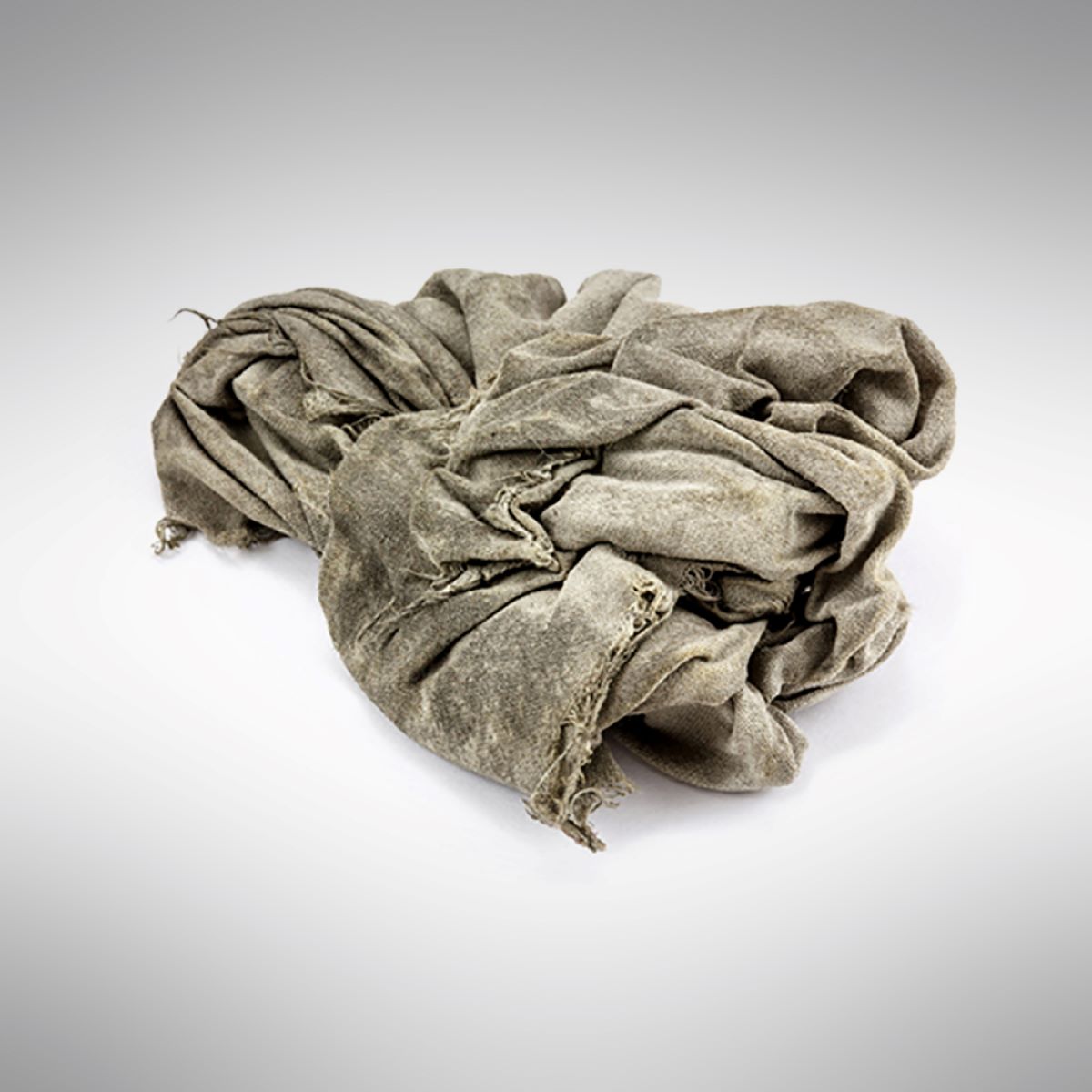

Articles
How To Store Oily Rags
Modified: December 7, 2023
Learn how to properly store oily rags and avoid fire hazards with our informative articles. Discover essential tips and guidelines to keep your workspace safe.
(Many of the links in this article redirect to a specific reviewed product. Your purchase of these products through affiliate links helps to generate commission for Storables.com, at no extra cost. Learn more)
Introduction
Oily rags can pose a significant risk if not stored properly. The residual oils on these rags can spontaneously ignite, leading to fires and even explosions. Therefore, it is crucial to take the necessary precautions when storing oily rags to protect yourself, your property, and those around you.
In this article, we will explore the best practices for storing oily rags. We will discuss safety precautions to keep in mind, how to choose a proper storage container, how to prepare the rags for storage, and tips for storing them in a secure manner. We will also cover the proper disposal methods for oily rags when they are no longer needed.
By following these guidelines, you can ensure the safe storage and disposal of oily rags, minimizing the risk of fire hazards and maintaining a secure environment.
Key Takeaways:
- Properly storing and disposing of oily rags is crucial to prevent fire hazards and protect the environment. Follow safety precautions, choose the right storage container, and prepare and store the rags responsibly to minimize the risk of accidents.
- By following safety precautions, choosing the right storage container, and properly preparing and storing oily rags, you can create a safe and responsible environment, protecting yourself, your property, and those around you from potential fire hazards.
Read more: How To Store Cleaning Rags
Safety Precautions
When it comes to dealing with oily rags, there are several crucial safety precautions you should always keep in mind. These measures will help prevent fires and accidents, ensuring the well-being of yourself and those around you.
1. Use a well-ventilated area: One of the most important safety precautions is to store oily rags in a well-ventilated area. Proper ventilation helps prevent the buildup of flammable vapors, reducing the risk of fires or explosions. Avoid storing oily rags in closed containers or confined spaces.
2. Avoid heat sources: Keep oily rags away from direct heat sources, such as heaters, stoves, or open flames. Heat can accelerate the oxidation process and increase the risk of spontaneous combustion.
3. Do not pile up oily rags: Avoid stacking or piling up oily rags, as this can increase the chances of heat being trapped within the pile. Instead, lay them out individually in a flat position to allow for better airflow.
4. Keep flammable solvents away: Store oily rags separately from flammable solvents or chemicals. Chemicals like gasoline, paint thinners, or turpentine can react with the oils in the rags and potentially ignite.
5. Use appropriate personal protective equipment (PPE): When handling oily rags, wear gloves and protective clothing to minimize skin contact. In case of accidental ignition, these protective measures can reduce the risk of injury.
6. Regularly inspect storage containers: Check your storage containers regularly for any signs of damage, leakage, or corrosion. Damaged containers may not provide adequate protection against ignition and could increase the risk of fires.
By following these safety precautions, you can greatly reduce the risk of accidents and ensure a safe environment when handling and storing oily rags. Remember, safety should always be the top priority.
Choosing a Proper Storage Container
Selecting the right storage container for oily rags is essential to minimize fire hazards and ensure the safe containment of potentially flammable materials. Here are a few factors to consider when choosing a proper storage container:
1. Fire-resistant materials: Opt for storage containers made of fire-resistant materials like metal or certain types of plastic. These materials are less likely to contribute to the spread of fire in case of ignition. Avoid using containers made of cardboard or other combustible materials.
2. Tightly sealed lids: Look for containers that have tightly sealed lids to prevent the escape of flammable vapors. This will help reduce the risk of spontaneous combustion and keep the rags secure inside the container.
3. Ventilation: While a tightly sealed lid is important, it’s also crucial to choose a storage container with proper ventilation. Ventilation allows for the escape of any volatile vapors that may form, minimizing the risk of buildup and potential ignition. Look for containers with built-in ventilation systems or vent holes.
4. Size and capacity: Consider the quantity of oily rags you’ll be storing to determine the appropriate size and capacity of the container. Ensure that the container has enough space to accommodate the rags without overcrowding. Overcrowding increases the risk of heat retention and spontaneous combustion.
5. Labeling and identification: It’s important to label the storage container clearly. Use a permanent marker to indicate that the container contains oily rags and include a warning about the flammable potential. This will help prevent accidental mishandling or misuse of the container.
6. Accessibility: Choose a storage container that allows for easy accessibility when adding or removing rags. This will encourage regular maintenance and inspection of the rags and the container itself.
Remember, the key to choosing a proper storage container lies in finding options that prioritize safety, containment, and ventilation. By selecting the right container, you can effectively minimize the risk of fire and create a safe storage environment for your oily rags.
Preparing the Rags for Storage
Before storing oily rags, it is important to properly prepare them to minimize the risk of spontaneous combustion. Here are some steps to follow when preparing the rags for storage:
1. Wring out excess oil: Start by wringing out any excess oil from the rags. This can be done by squeezing them tightly to remove as much oil as possible. The less oil present on the rags, the lower the risk of oxidation and self-ignition.
2. Spread out the rags: Lay the rags out in a well-ventilated area to allow them to dry completely. Avoid bunching or folding the rags, as this can trap heat and increase the chances of spontaneous combustion.
3. Keep rags away from flammables: During the drying process, ensure that the rags are kept away from any flammable materials, including solvents, chemicals, or other oily substances. This will prevent any potential reactions or increased fire hazards.
4. Pay attention to temperature: Ensure that the area where the rags are drying is not too hot. Excessive heat can accelerate the oxidation process and increase the risk of ignition. Ideally, choose a cool and well-ventilated space for drying the rags.
5. Use an approved disposal container: If the rags are heavily soaked in oil and cannot be used again, it is recommended to dispose of them properly. Place these rags in an approved disposal container that is specifically designed for oily waste. These containers are fire-resistant and can help mitigate the risk of ignition.
Remember, proper preparation of the rags ensures that they are ready for safe storage. By following these steps, you can significantly reduce the chances of heat buildup and spontaneous combustion, ensuring the safety of your storage area.
Store oily rags in a metal container with a tight-fitting lid to prevent spontaneous combustion. Keep the container in a well-ventilated area away from heat sources.
Storing Oily Rags Properly
Proper storage of oily rags is crucial to minimize the risk of fire hazards and ensure a safe environment. Follow these guidelines to store your oily rags in a secure and responsible manner:
1. Place rags in a designated container: After the rags have been properly prepared, store them in a designated container specifically meant for the storage of oily rags. This container should be fire-resistant and have a tightly sealed lid to prevent the escape of flammable vapors.
2. Keep the container in a well-ventilated area: Store the container in a well-ventilated area, away from any potential sources of ignition or heat. Ensure there is adequate airflow to prevent the buildup of combustible vapors.
3. Store the container away from flammable materials: Keep the container of oily rags away from any flammable materials, such as solvents, fuels, or chemicals. Separating these items reduces the risk of accidental ignition due to chemical reactions.
4. Store in a cool and dry location: It is important to store the container in a cool and dry location to prevent the rags from becoming damp or exposed to excessive moisture. Moisture can contribute to the oxidation process and increase the risk of spontaneous combustion.
5. Regularly inspect the storage area: Check the storage area regularly for any signs of leakage, damage, or deterioration. If you notice any issues, address them immediately to maintain the integrity of the storage environment.
6. Keep the storage area secure: Ensure that the storage area is secure and access is restricted to authorized individuals only. This prevents accidental exposure to the rags and potential mishandling.
7. Be organized: Maintain proper organization within the storage area to easily locate and access the container when needed. Keep the area clean and free from clutter to reduce the risk of accidents or tripping hazards.
By following these guidelines, you can maintain a safe and organized storage area for your oily rags. Implementing these practices will help minimize the risk of fires and ensure a secure environment for you and those around you.
Read more: How To Make A Rag Quilt
Disposing of Oily Rags Safely
Proper disposal of oily rags is essential to prevent environmental contamination and reduce the risk of fire hazards. Follow these guidelines to dispose of your oily rags safely:
1. Allow rags to cool completely: Before disposing of oily rags, ensure that they have completely cooled down. This reduces the risk of spontaneous combustion during the disposal process.
2. Inspect local regulations: Research the regulations and guidelines pertaining to the disposal of oily rags in your local area. Different regions may have specific requirements and restrictions, so it’s important to be aware of and comply with these regulations.
3. Use an approved disposal container: Place the oily rags in an approved disposal container designed for this purpose. These containers are typically made of fire-resistant materials and are specifically designed to contain flammable materials safely. Ensure the container is tightly sealed to prevent the escape of flammable vapors.
4. Consider professional disposal services: If you have a large quantity of oily rags or are unsure about how to dispose of them safely, it is advisable to contact professional disposal services. These experts can guide you through the proper procedures and ensure that the rags are disposed of in accordance with local regulations.
5. Do not wash oily rags: Avoid washing oily rags as this can lead to water contamination and exacerbate environmental concerns. Instead, focus on proper disposal methods to minimize the negative impact on the environment.
6. Follow hazardous waste protocols: If the oily rags contain hazardous substances or have been used in a hazardous environment, follow the appropriate protocols for disposing of hazardous waste. This may involve contacting your local waste management facility or seeking guidance from environmental agencies.
Remember, proper disposal of oily rags is crucial not only for personal safety but also for environmental protection. By following these guidelines and adhering to local regulations, you can ensure that your oily rags are disposed of safely and responsibly.
Conclusion
In conclusion, storing and disposing of oily rags safely is essential to prevent fire hazards and maintain a secure environment. By following the guidelines outlined in this article, you can minimize the risk of spontaneous combustion and ensure the well-being of yourself, your property, and those around you.
Remember to take the necessary safety precautions, such as storing oily rags in well-ventilated areas, keeping them away from heat sources, and wearing appropriate personal protective equipment. These measures will help create a safe workspace and reduce the likelihood of accidents or injuries.
When it comes to choosing a storage container for oily rags, opt for fire-resistant materials, make sure it has a tightly sealed lid, and consider ventilation options. Proper container selection will help contain flammable vapors and reduce the risk of ignition.
Before storing oily rags, ensure they are properly prepared by wringing out excess oil and allowing them to dry in a well-ventilated area. Taking these steps will significantly reduce the chances of heat buildup and spontaneous combustion.
When it’s time to dispose of oily rags, be sure to refer to local regulations and guidelines. Use approved disposal containers, consider professional disposal services for larger quantities, and avoid washing the rags to prevent water contamination.
By incorporating these practices into your routine, you can create a safe and responsible approach to storing and disposing of oily rags. Remember, safety should always be the top priority to protect yourself, your property, and the environment.
So, let’s make a commitment to handle and store oily rags in a responsible and safe manner. By doing so, we can prevent accidents, protect our surroundings, and ensure a secure working environment for everyone involved.
Frequently Asked Questions about How To Store Oily Rags
Was this page helpful?
At Storables.com, we guarantee accurate and reliable information. Our content, validated by Expert Board Contributors, is crafted following stringent Editorial Policies. We're committed to providing you with well-researched, expert-backed insights for all your informational needs.















0 thoughts on “How To Store Oily Rags”